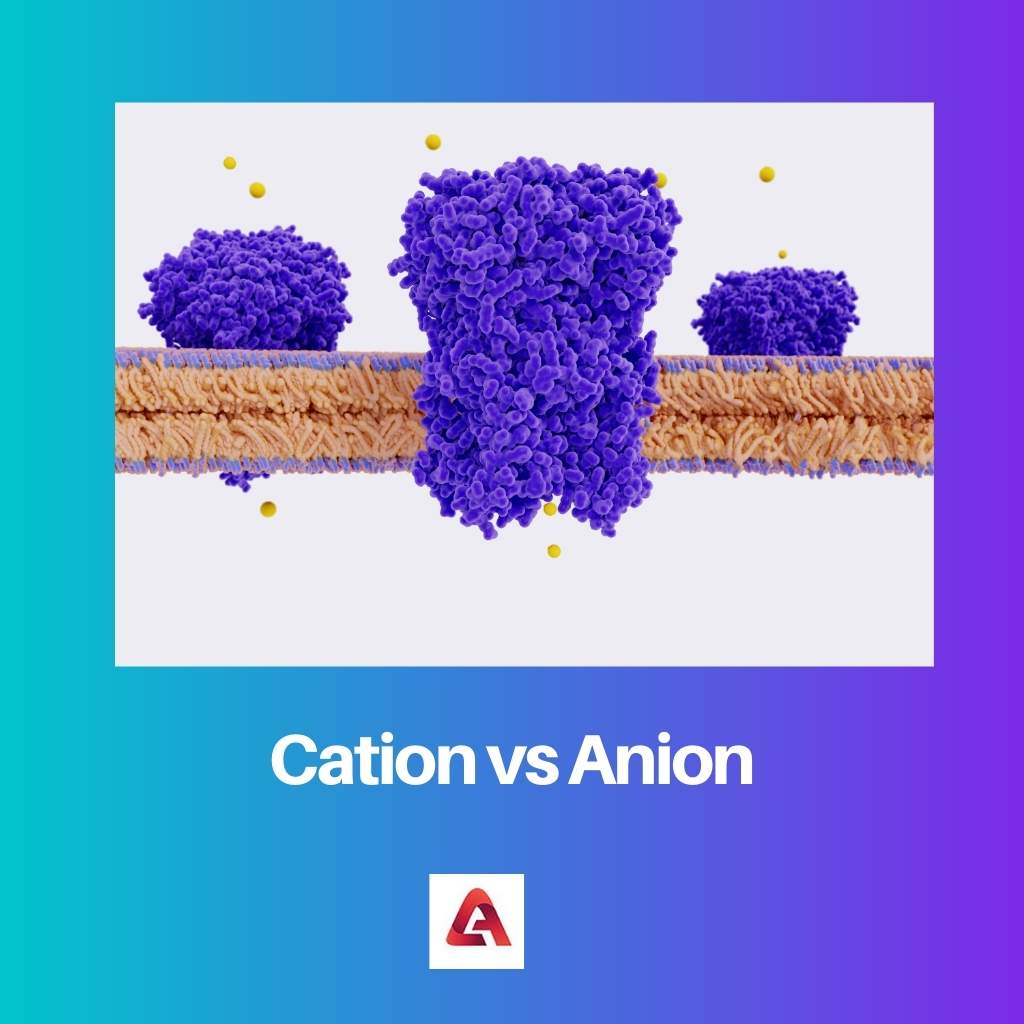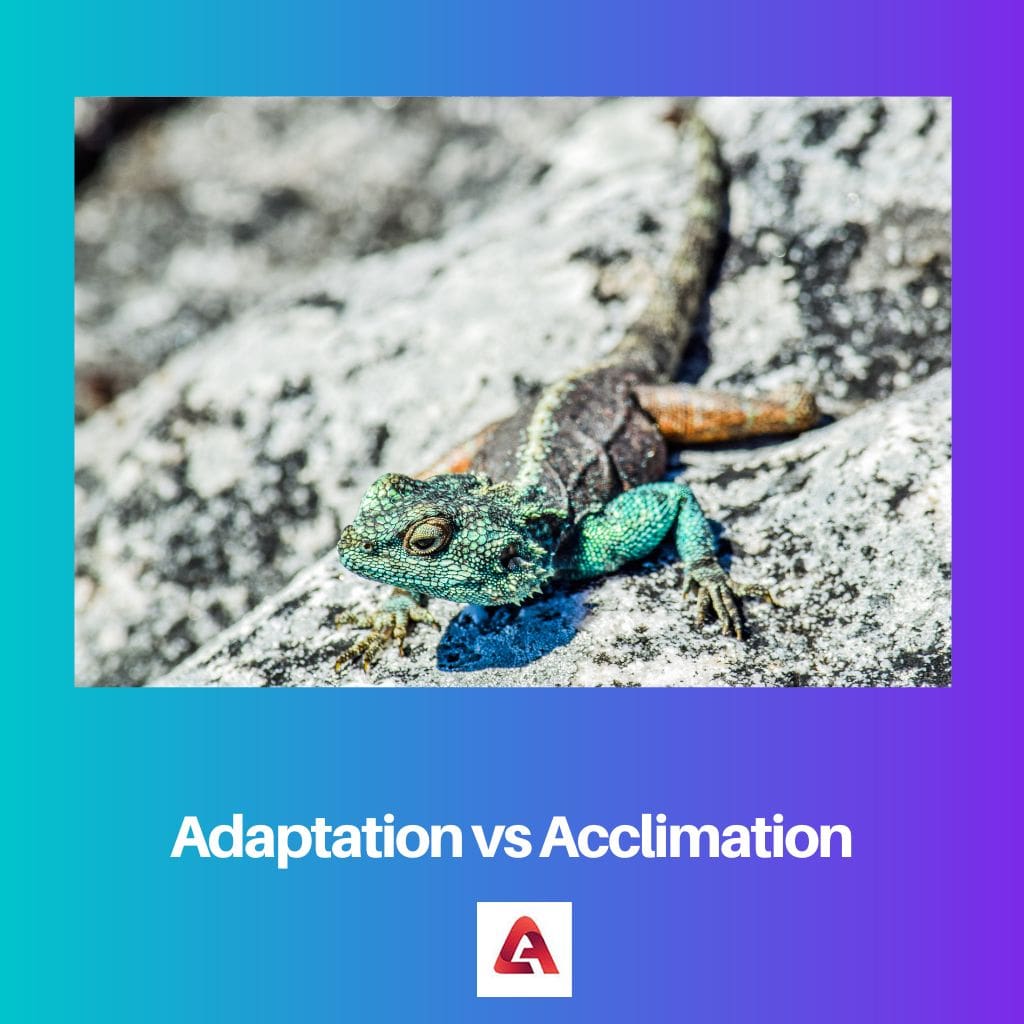When an atom is in a normal phase, It doesn’t carry any charge. It means it is in a neutral state, Where an atom carries an equal number of positive or negative charges (Charge is a basic property of elementary particles of a matter).
When an atom loses an electron, then it develops a positive charge. When an atom gains an electron, then it develops a negative charge.
The charge that develops on an atom is either called a cation or anion.
Key Takeaways
- Cations are positively charged ions formed by losing electrons, whereas Anions are negatively charged ions formed by gaining electrons.
- Cations are attracted to Anions due to opposite charges, while Anions repel other Anions and attract Cations.
- Cations are smaller than their parent atom, while Anions are larger.
Cation vs Anion
A cation is a charged particle with a positive charge, and it features more numbers of protons than electrons in order to be stable. It is formed by metals. Anion is a type of charged particle with a negative charge that is formed by non-metals and has more electrons than protons.

Cation words came from the Greek word κάτω (káto) ἰόv (kation). It means going up. When an atom loses negatively charged electrons, it develops a positive charge on it. It is indicated with the plus sign (+).
The number of the plus sign indicates the number of lost electrons. For example, the symbol Mg++ indicates the loss of two electrons. It means it has the property of cation.
Anion words came from the Greek word ἄνω ἰόv (anion). It means going up. When an atom gains negatively charged ions, it develops a negative charge on it. It is indicated with the minus sign(-).
The number of the minus sign indicates the number of gained electrons. For example, the symbol of 0– indicates the gain of two electrons. It means it has the property of an anion.
Comparison Table
| Parameters of Comparison | Cation | Anion |
|---|---|---|
| Definition | It is a charged particle which has a positive charge is called cation. | It is a charged particle which has a negative charge is called anion. |
| Number of electrons | It has higher numbers of protons than electrons | It has less numbers of protons than electrons. |
| Element | Mostly, metals form cations. | Mostly, non-metals form anions. |
| Size | Cations are smaller in size than the anions. | Anions are larger in size than cations. |
| Gain/lose | Cations lose electrons and attain stability. | Anions gain electrons and attain stability |
| In electrolysis | Cations get attracted towards the negativity charged electrode during the process of electrolysis | Anions get attracted towards the positively charged electrode during the process of electrolysis. |
What is Cation?
The term cation was introduced by Michael Faraday in 1834. It is a type of ion. Generally, metallic atoms have the property of cation as they tend to hold some of the electrons relatively loosely. So metals lose electrons and form cations.
In the periodic table, it is possible to find the elements having the property of Cation. Metals like alkali earth metals, alkali metals always form cations. In cation, the type of electrode used is Anode.
The process of electrolysis, which involves the passing of electricity through the material and produces a chemical reaction
During this process, the Cations are attracted to a negatively charged electrode called a cathode.
The number of electrons in a cation is less than the number of protons as the number of electrons goes down, which results in the development of positive charges on an atom.
Is Sodium a Cation?
The atomic number of Sodium is 11. In the outer cell of Sodium, there is a presence of 1 electron. So, to attain stability, it will lose 1 electron. This led to the development of 1 positive charge Sodium. Hence, it is a cation.
What is Anion?
Anion was a term introduced by Michael Faraday in 1834. It is a type of ion. Generally, non-metallic metals have the property of anion. It tends to gain electrons to complete octant.
Because in the outer cell of an anion, there is always a scope to add some electrons to obtain stability.
In anion, the type of electrode used is the cathode.
The process of electrolysis involves the passing of electricity through the material and produces a chemical reaction.
During this process, the anions are attracted to a positively charged electrode called an anode.
The number of electrons in an anion is more than the protons. The number of electrons goes up after gaining electrons, which results in the development of a negative charge on an atom.
Is Chlorine an anion?
The atomic number of Chlorine is 17. In the outer cell of electrons, there is the presence of 7 electrons, and it requires one electron to complete an octet. And also to attain stability. So, it gains one electron and develops one negative charge.
Hence, Chlorine is an anion.
In the periodic table, it is easy to find the anion based on the position of an atom. Like halogen, it always forms anions. Anions are larger in size than cations. It forms electrostatic or ionic bonds with cations to form ionic compounds.
Main Differences Between Cation and Anion
- A cation is a positively charged atom, whereas an Anion is a negatively charged atom.
- A cation is smaller in size than an Anion, whereas an Anion is larger.
- Cation has fewer electrons than the protons, whereas Anion has higher numbers of electrons than the protons.
- A cation forms an ionic bond after reacting with an anion, Whereas an Anion forms an ionic bond after reacting with a Cation.
- Cations lose electrons to attain stability, whereas Anion gains electrons to attain stability.






